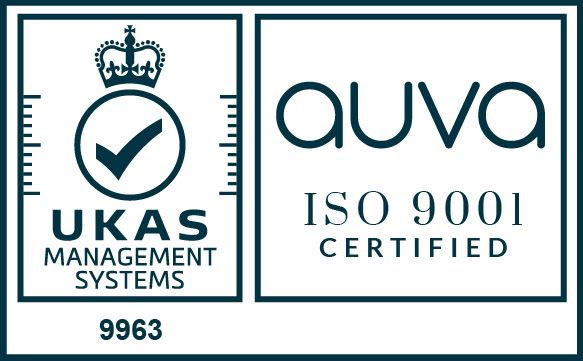Frequently Asked Questions - Thermocouples
Q - What is a Thermocouple?
A - A thermocouple is a sensor used to measure temperature in a number of processes. Thermocouples consist of two wire legs made from dissimilar metals which are fixed together at one end, creating a junction. When this junction experiences a change in temperature a voltage is created, this voltage can then be measured and referenced back to the temperature. We supply many types of Thermocouples for various applications, to discuss which would best suit your application contact us here.
Q - I need a new Thermocouple, but dont know what type I've been using, can you help?
A - The simplest way to identify a thermocouple is by the colour of the wire (See our Thermocouple wire chart), for more complex sensors please send a couple of photos to 'sales@sterlingsensors.co.uk' along with any additional information and we will get back to you within one working day.
Q - What is mineral insulated Thermocouple cable and its benefits?
A - Mineral insulated thermocouple cable consists of an outer metal sheath that houses the thermocouple conductors; the sheath is then filled with a highly compacted magnesium oxide powder to prevent the conductors contacting at any point other than the fixed junction. This construction allows the sheaths to be easily bent or formed to shape as required by the user, but remain rigid during use. The whole assembly is hermetically sealed giving the conductors full protection from the operating environment.
Mineral Insulated thermocouples have a wide temperature range are robust, flexible and can be made in long lengths and with a broad range of diameters. They also have a very fast response time, and generally more resistant to chemicals due to the sheath and insulating power protecting them meaning they have a longer life than normal sensors.
Q - What is the difference between a Thermocouple and an RTD?
A - We have a detailed case study giving practical advice and comparison on the difference between thermocouples and RTD sensors here: https://www.sterlingsensors.co.uk/rtd_vs_thermocouple
Q - What is a type K Thermocouple?
A - A type K thermocouple is the most popular thermocouple available and is used for a wide range of applications. It has a good mV per Deg C output and a wide temperature range of use (typically to – 200 to + 1200 C). It is made from two conductors, the positive leg is 90% nickel, 10% chromium and negative leg is 95% nickel, 2% aluminium, 2% manganese and 1% silicon.
Read more about Type K Thermocouples here.
Q - Which leg of Type K is magnetic?
A - type K thermocouples have two legs (Alumel & Chromel). The Alumel leg is magnetic, where the Chromel leg is non-magnetic. This helps to identify the thermocouple when there is no colour coding.
Q - How far should my Thermocouple be immersed in the application?
A - Thermocouple sensors are 'tip' sensing devices which makes them ideal for both surface and immersion applications (Depending on the sensor style). Immersion thermocouples must be used carefully to avoid stem conduction errors, this is when heat flows to or from the sheath and in or away from the process which can result in error in the reading. As a rule of thumb the sensor should be immersed a minimum of 4 times the outside diameter of the sheath (E.g if the diamater is 3mm the minimum immersion depth would be 12mm)

Q – How accurate are Thermocouples?
A - There are many types of thermocouple (K,T,J,E,N,R,S & B). Each type has its own accuracies as governed by the IEC. There are typically 3 accuracy tolerances for each type of thermocouple, with Class 1 being the most accurate. For type K thermocouples the Class 1 accuracy is 1.5°C or 0.4% of reading (whichever is greater). We have a full chart of accuracies for all thermocouples here
Q - What is the difference between Thermocouple grade cable and Extension grade cable?
A - Thermocouple grade cable is used internally in sensors to create a sensing point, extension cable is used to connect a sensor to the measuring instrument. It is actually the same as Thermocouple grade cable which means the chance of error is significantly reduced. From past experience we recommend using no more than 80 - 100 metres as this will start to cause errors in the reading, it is also recommended that shielded cable is used for longer runs of cable. For more detailed technical information on extension cable visit our Thermocouple technical page.
Q - What is Thermocouple compensating cable?
A - Compensating cable is an economical alternative to extension cable, this is due to it using cheaper alloys, the alloys of which are different from those of the thermocouple grade but have the same output over a limited temperature range. Thermocouple and extension cable are interchangeable but compensating cable must ONLY be used for its intended purpose (ie compensating cable could not be used to create a junction inside a sensor). For more detailed technical information on compensating cable visit our Thermocouple technical page.
Q - How do I choose the correct Thermocouple for my application?
A - When choosing a thermocouple, you must consider the following:
• What are you measuring the temperature of (a surface or immersed in solid,liquid or gas)?
• The temperature range you need to measure (As a general rule your operating temperature should not be in the higher end of the thermocouple temperature range as it will depreciate a lot faster than it should, e.g your operating temperature varies from 650° to 690°C, rather than selecting a type J Thermocouple (rated +20 to +700°C) you would select the next highest which is type E (rated 0 to +800°C)
• If it is essential to have a fast response time or not, to learn the various factors of choosing a response time read more on our Thermocouple technical page.
• The specific sizes required to fit your application e.g probe diameter, probe length, compression fittings, type of connector required etc.
• Do you require a specific sheath material?
• Do you need your sensor calibrated?
• Will the sensor need to be resistant to chemicals/abrasion/vibration or any other environmental considerations?
• Is there high emf (electromagnetic interference) potential from power switching, rectification, or radio waves?
• Any other installation considerations? (e.g does the sensor need to be bent in to shape before installation)
We have also developed a questionnaire designed to assist customers in choosing the thermocouple they require, simply fill in the PDF and return the form to sales@sterlingsensors.co.uk
Q - What is a Pt100 Thermocouple?
A - We are often asked this question however Pt100 Thermocouples do not exist. Thermocouples are a type of sensor, and Pt100s are a type of RTD which is another sensor type.
Q - What is the HS Tariff Code for a Thermocouple when importing and exporting?
A - The HS (Harmonized System) code for all thermocouple types is classified as 90259000.
Q - Thermocouple vs Pt100 (Which is best?)
Both Pt100 RTDs and Thermocouples have their advantages and disadvantages. The main advantages of an RTD Sensor is that they are very accurate over a wide range and combined with excellent stability, this is in comparison to a thermocouple which is less accurate, less stable and are known to drift over time. RTD Sensors are more suitable for lower temperature ranges, where higher accuracy and repeatability is required. They also need to be immersed in the media due to stem conduction errors.
We have a detailed case study giving practical advice and comparison on the difference between RTDs and thermocouples here:https://www.sterlingsensors.co.uk/rtd_vs_thermocouple
For more information on Thermocouples take a look here:-
University of Cambridge - Thermocouple operating principles
National Physics Laboratory - What is a Thermocouple?
National Physics Laboratory - Thermocouples
or to discuss your requirements with our sales team, call +44(0)161 620 0410 or Email sales@sterlingsensors.co.uk
If you have a question that isn't answered here, why not ask us via the contact form or
Give us a call on +44(0)161 620 0410 or email us: sales@sterlingsensors.co.uk
 Made in the UK
Made in the UK









